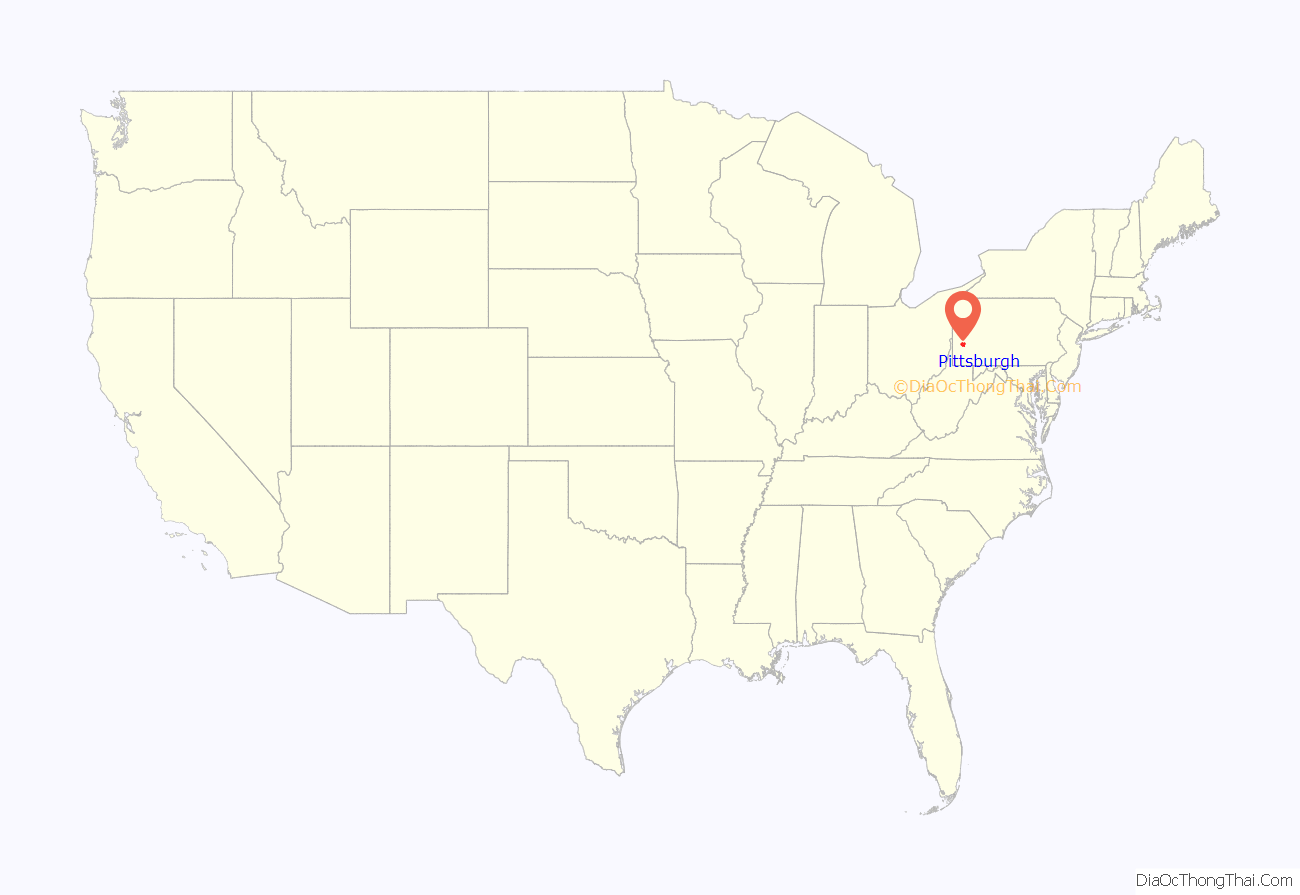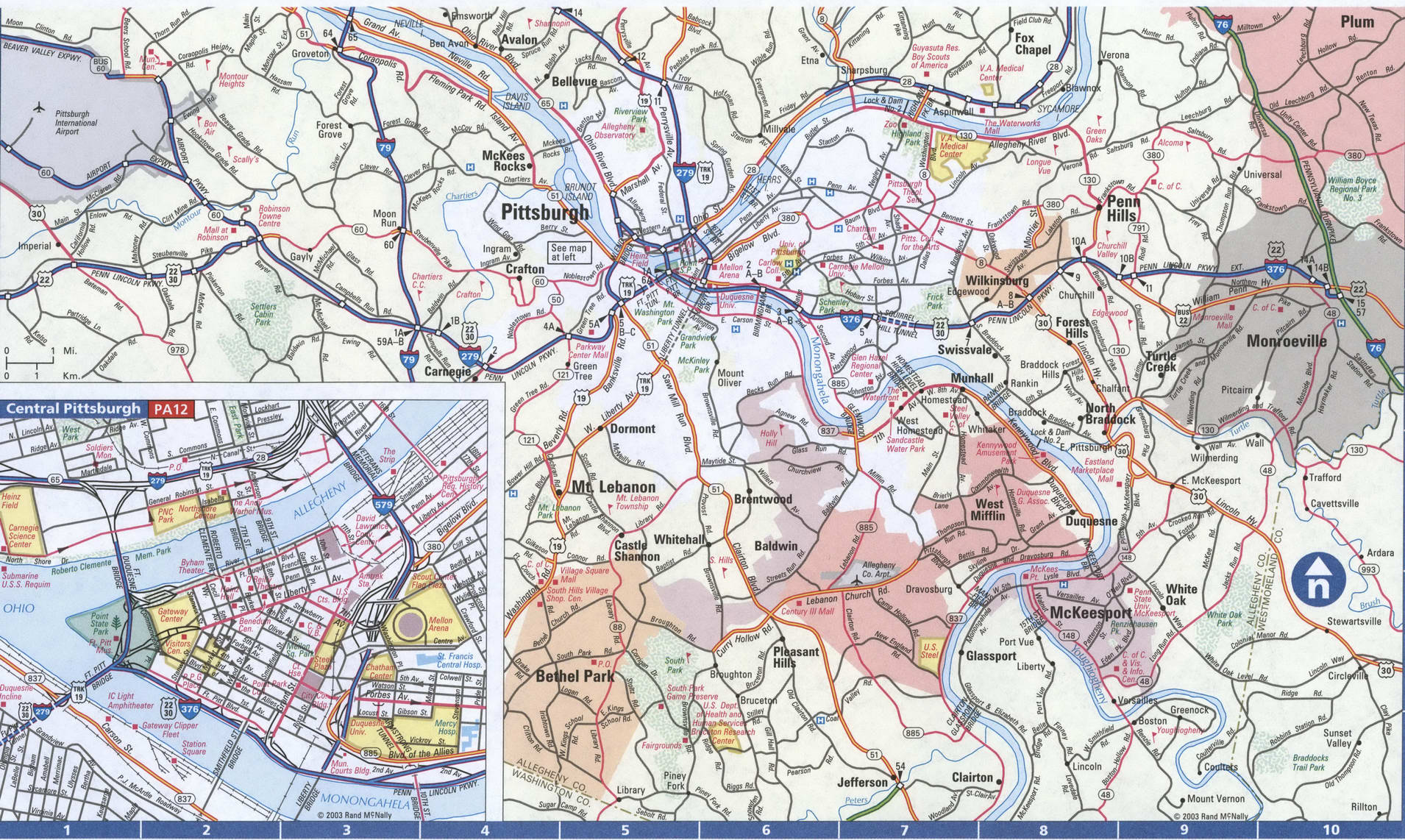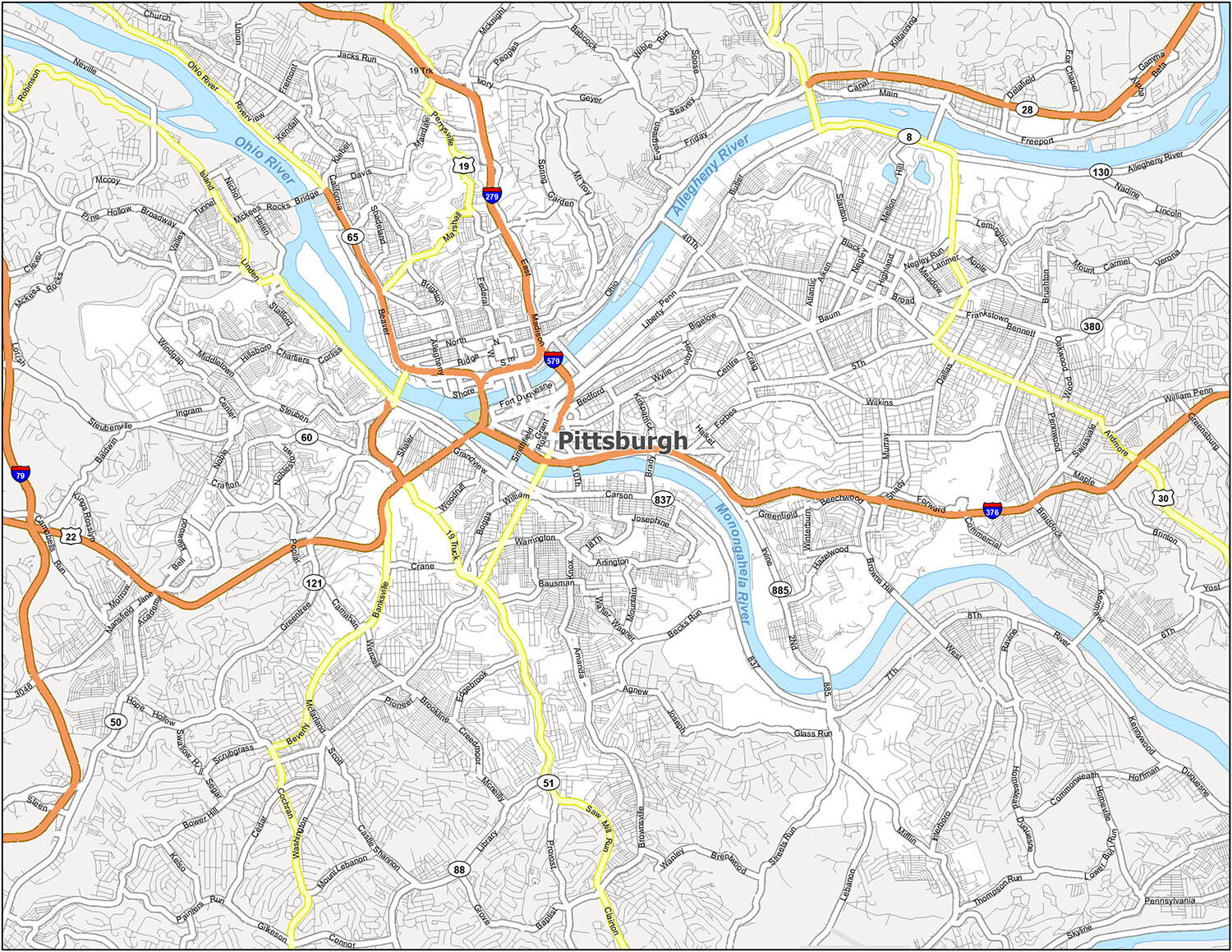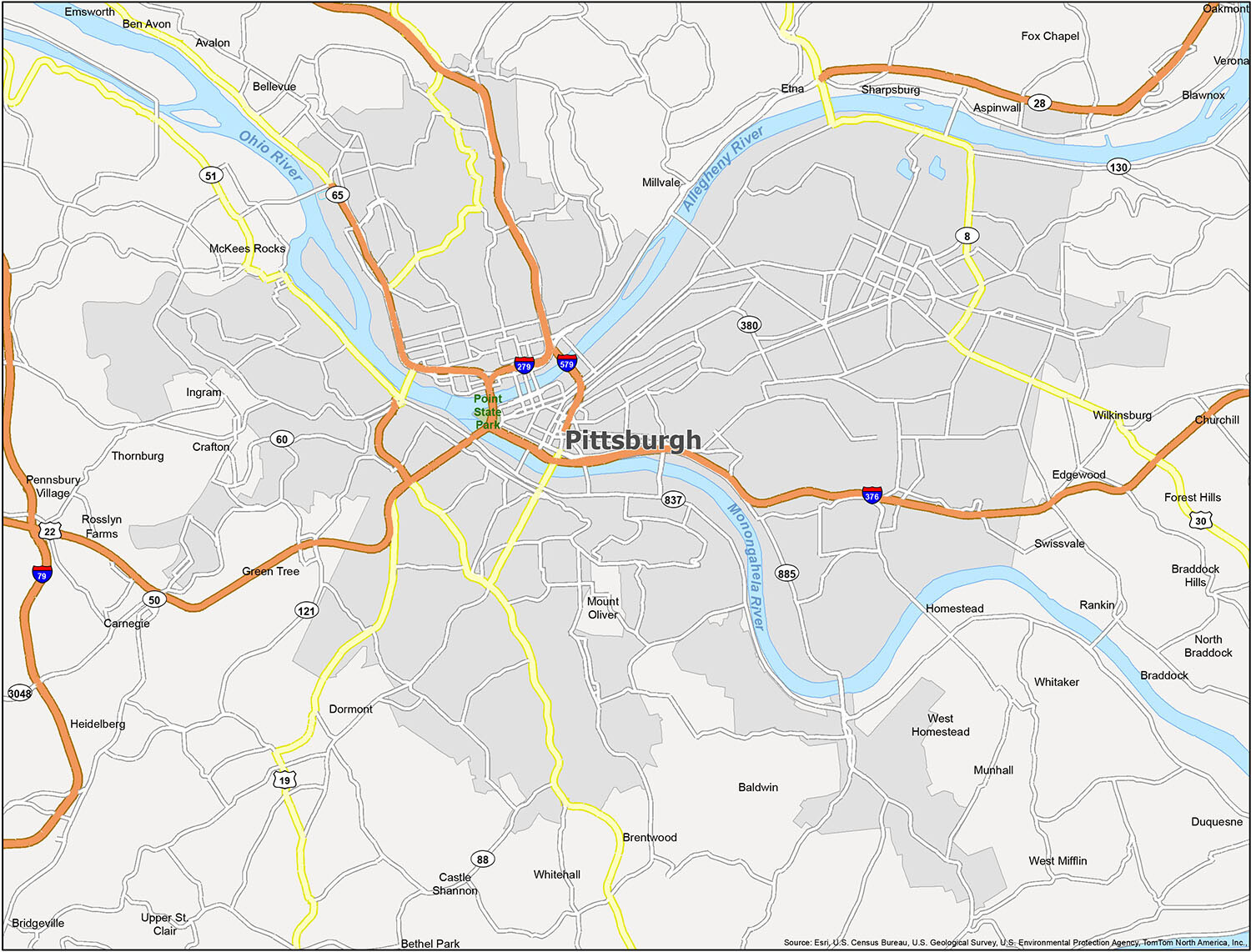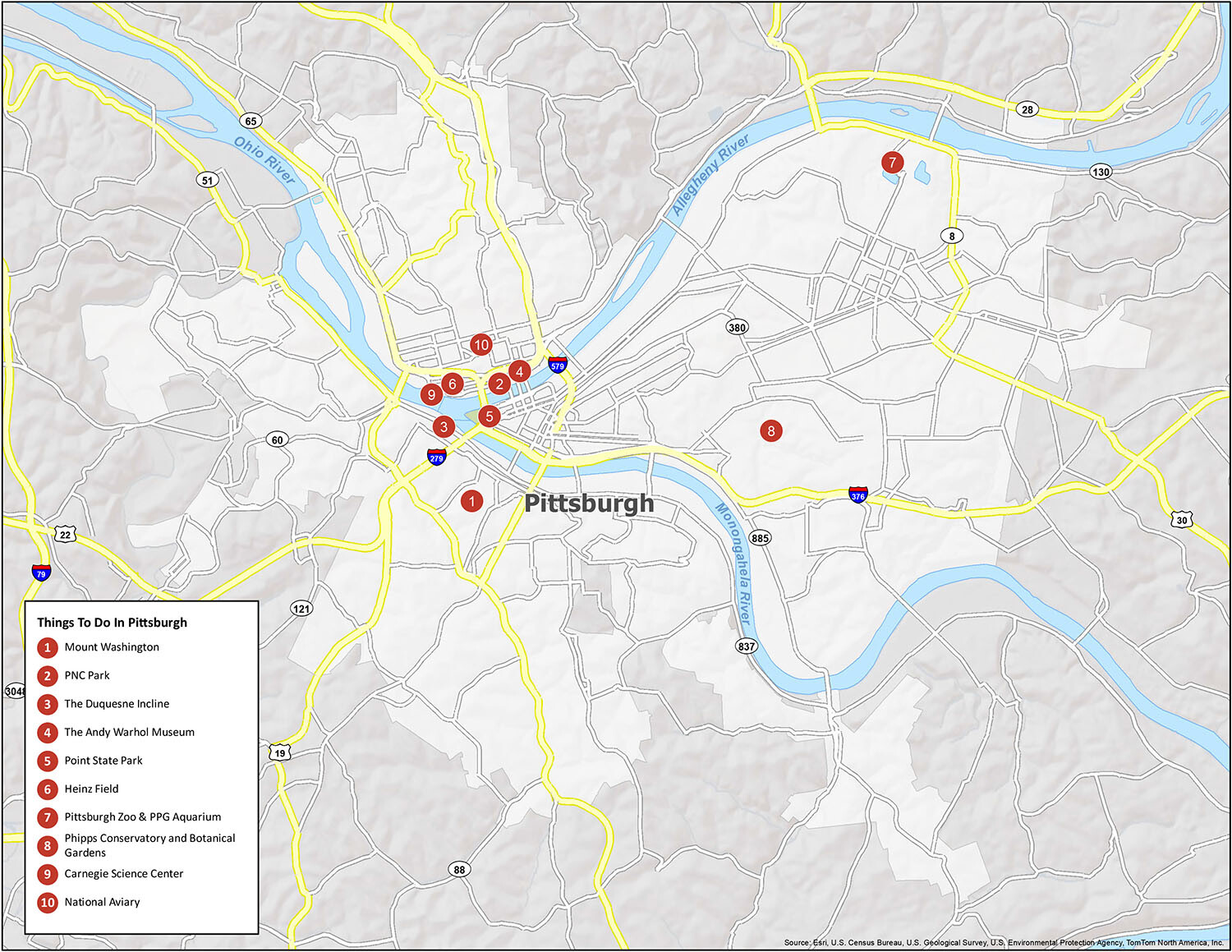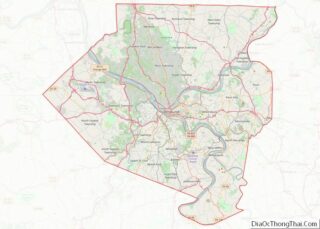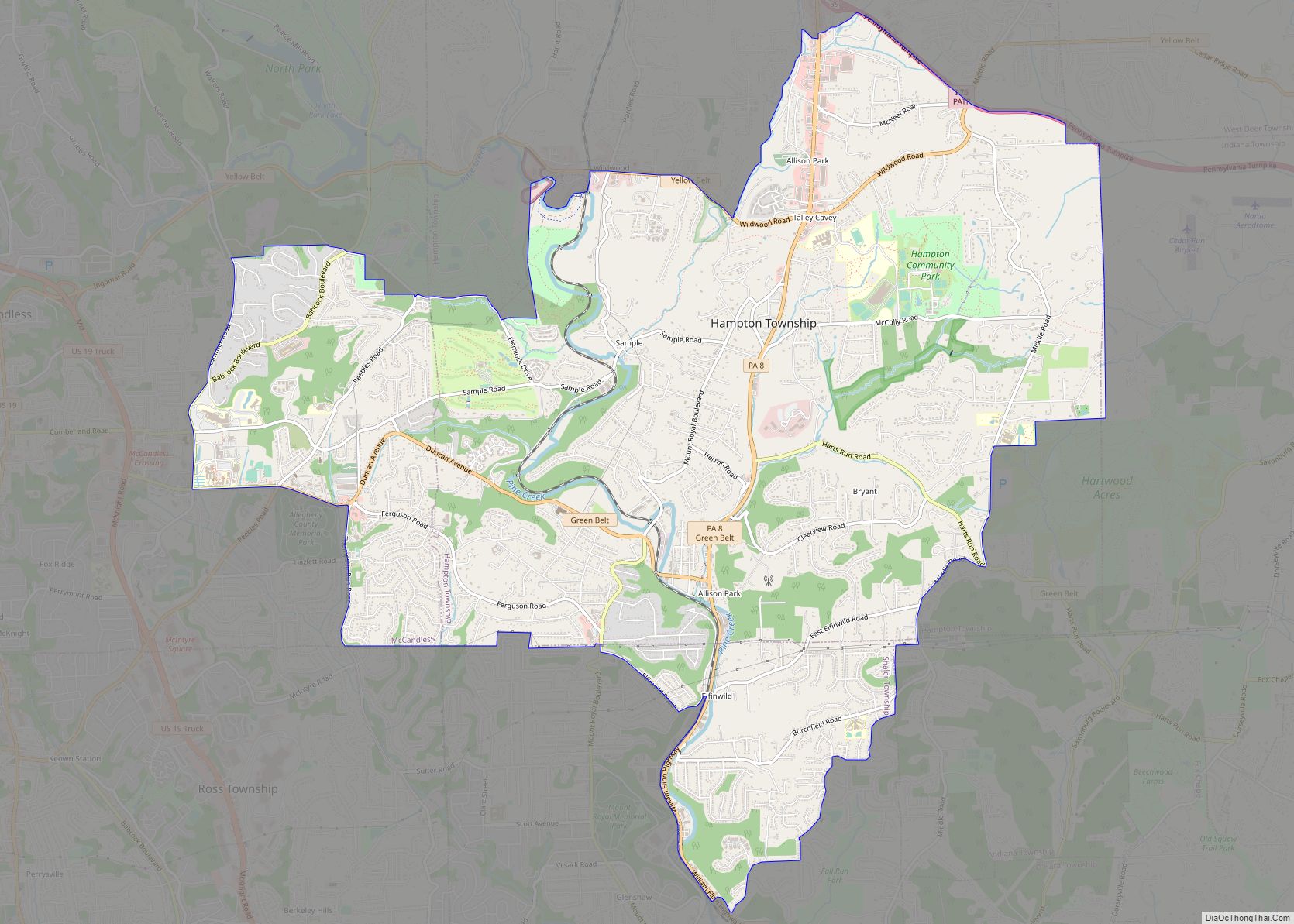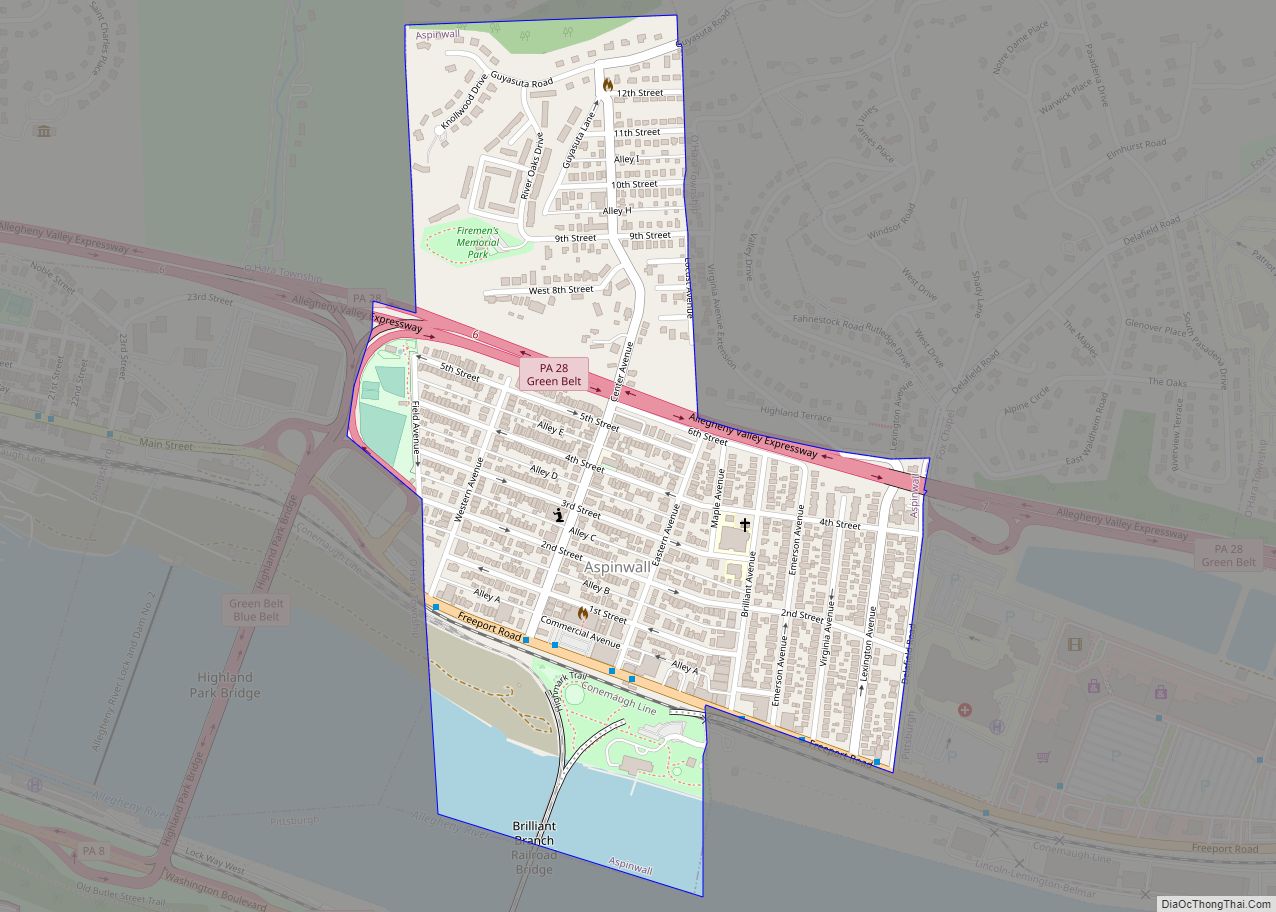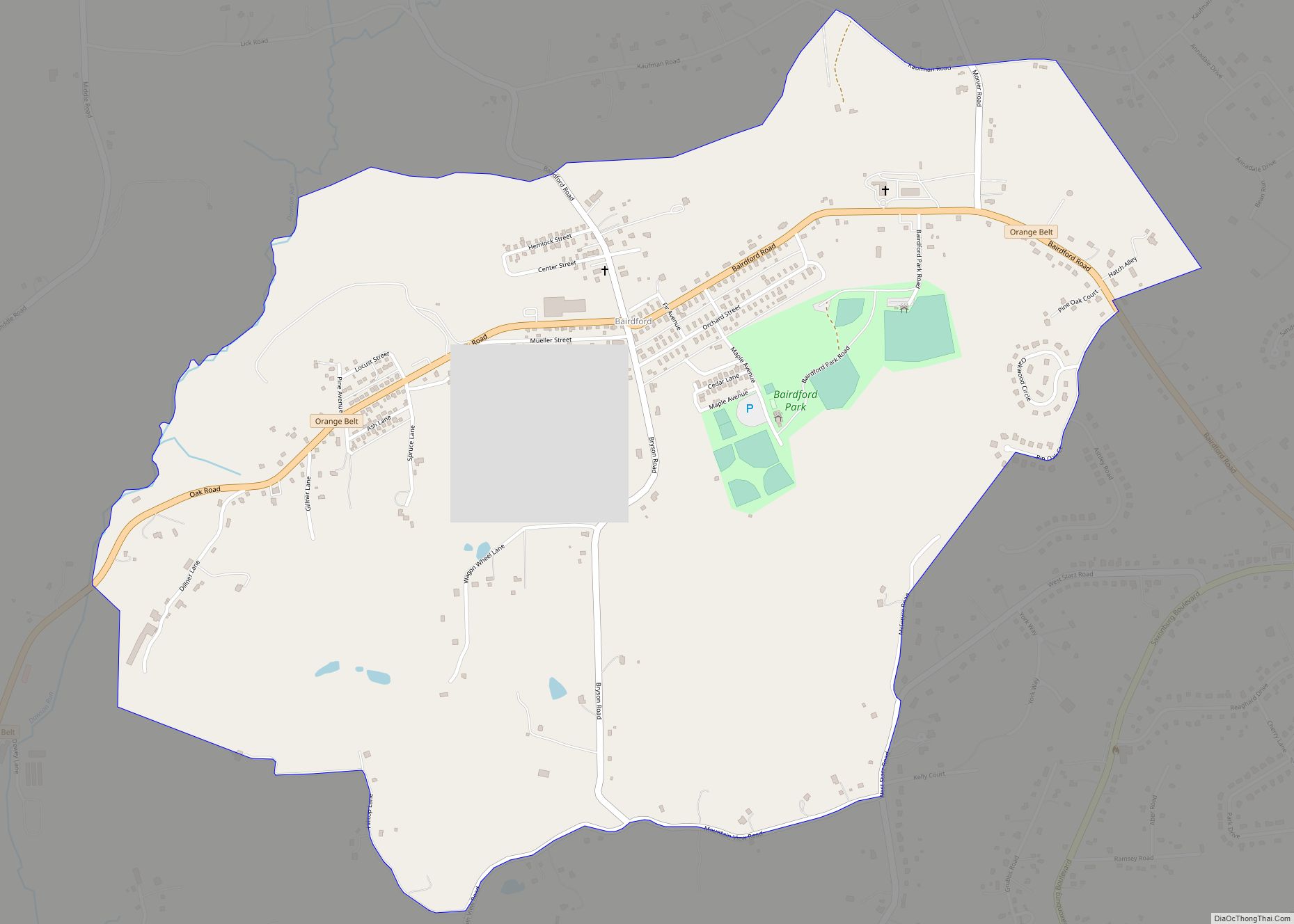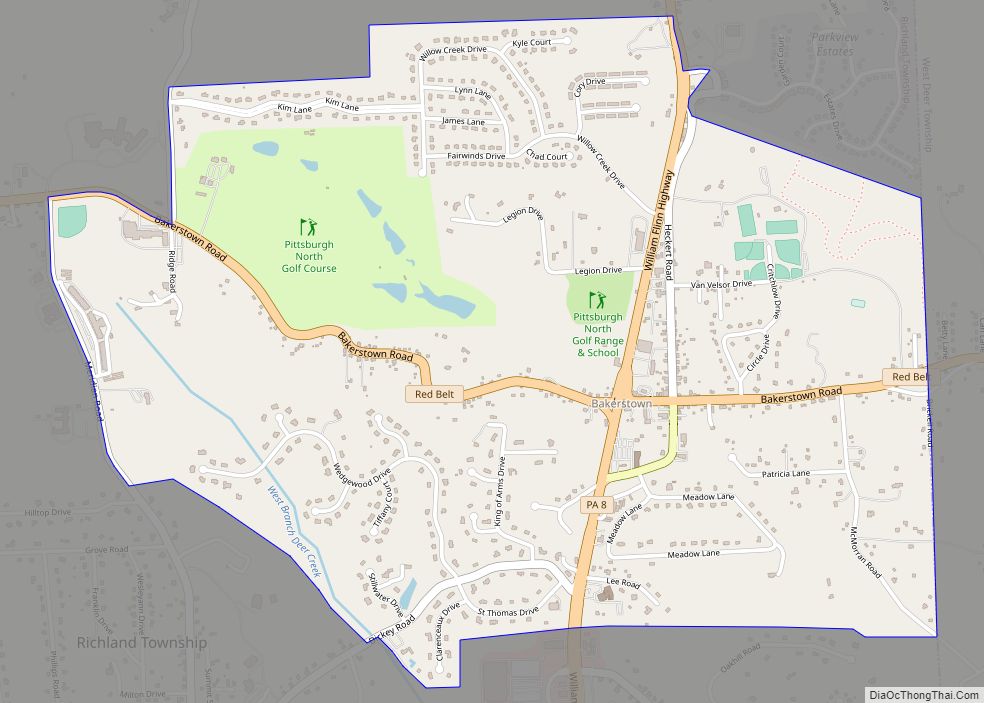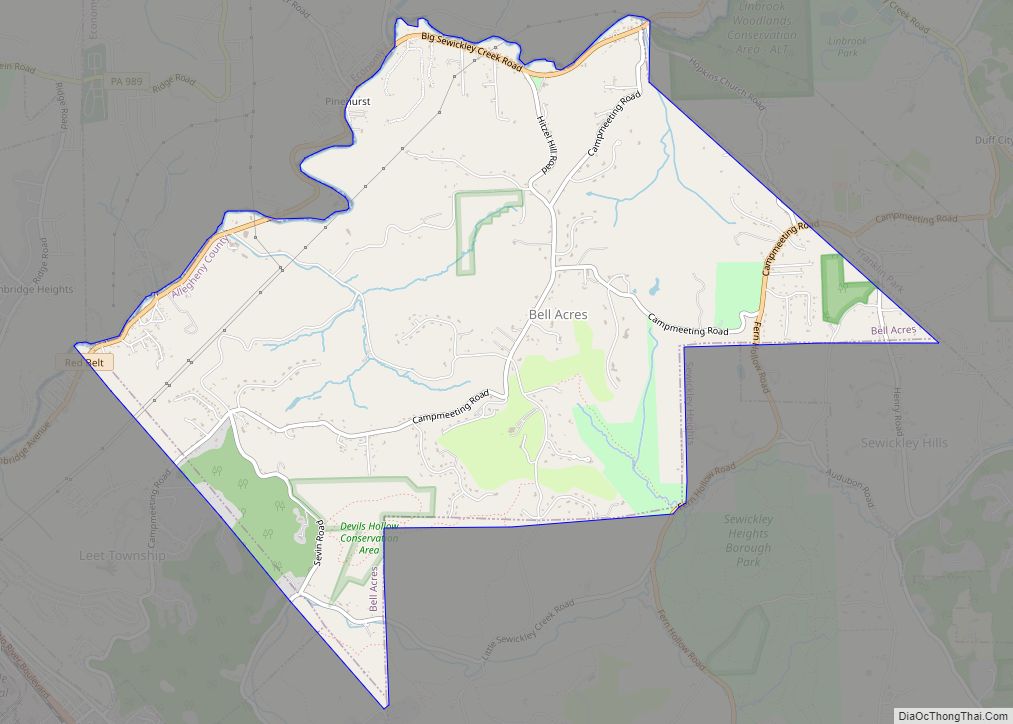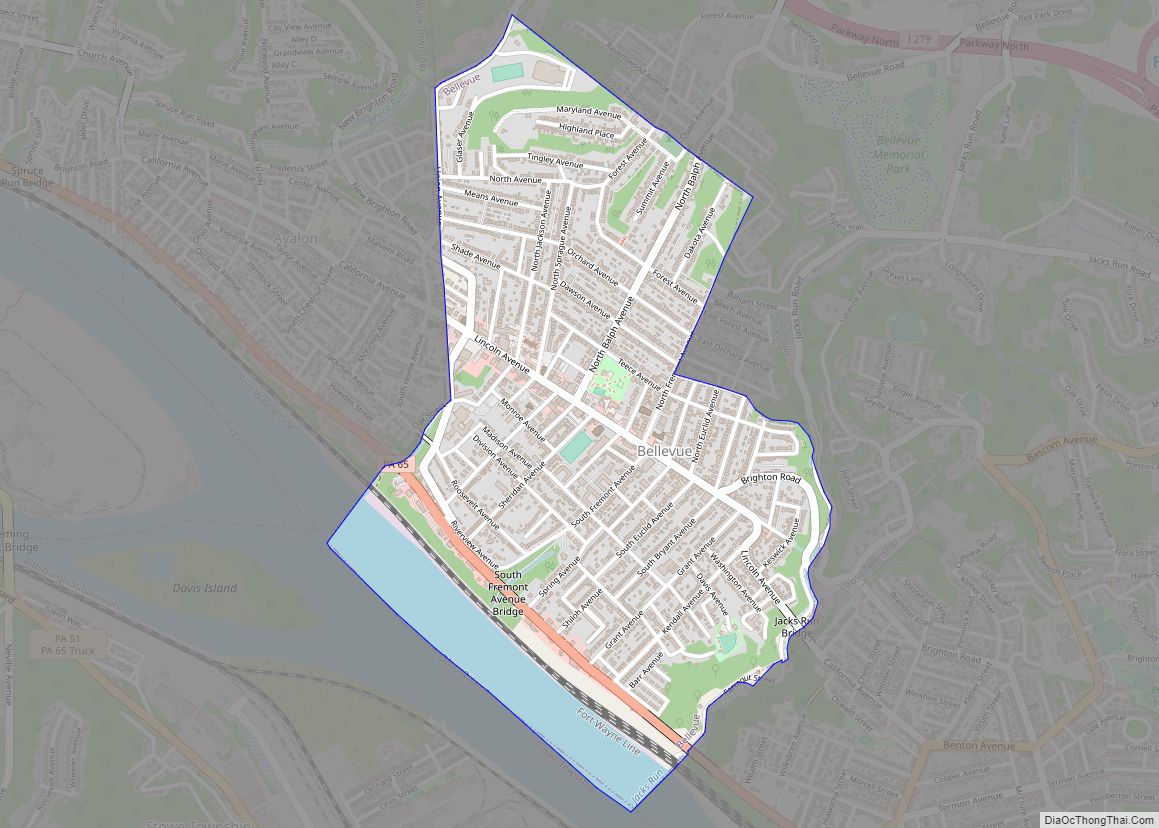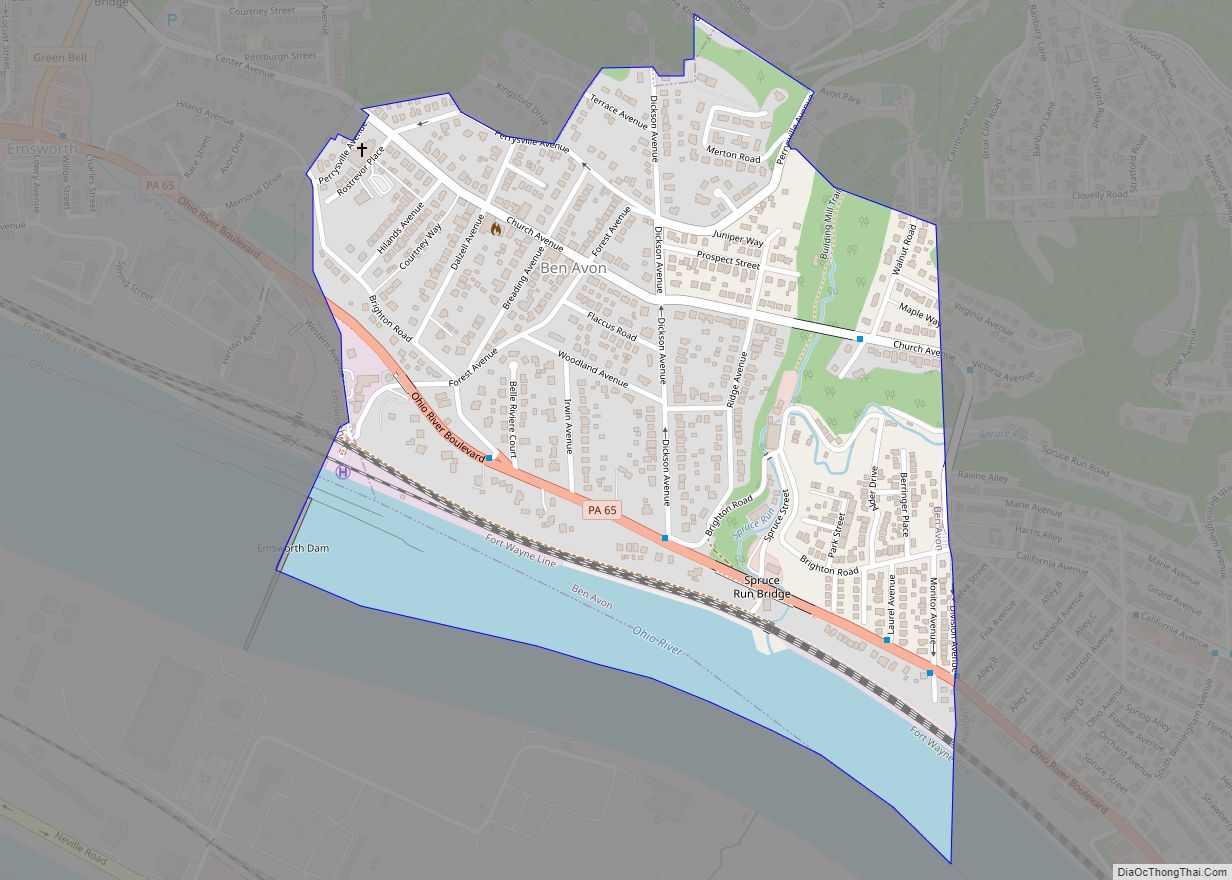Pittsburgh (/ˈpɪtsbɜːrɡ/ PITS-burg) is a city in the Commonwealth of Pennsylvania and the county seat of Allegheny County. It is the most populous city in both Allegheny County and Western Pennsylvania, the second-most populous city in Pennsylvania after Philadelphia, and the 68th-most populous city in the U.S. with a population of 302,971 as of the 2020 census. The city anchors the Greater Pittsburgh metropolitan area of Western Pennsylvania; its population of 2.37 million is the largest in both the Ohio Valley and Appalachia, the second-largest in Pennsylvania, and the 27th-largest in the U.S. It is the principal city of the greater Pittsburgh–New Castle–Weirton combined statistical area that extends into Ohio and West Virginia.
Pittsburgh is located in southwest Pennsylvania at the confluence of the Allegheny River and the Monongahela River, which combine to form the Ohio River. Pittsburgh is known both as “the Steel City” for its dominant role in the history of the U.S. steel industry, and as the “City of Bridges” for its 446 bridges. The city features 30 skyscrapers, two inclined railways, a pre-revolutionary fortification and the Point State Park at the confluence of the rivers. The city developed as a vital link of the Atlantic coast and Midwest, as the mineral-rich Allegheny Mountains led to the region being contested by the French and British empires, Virginians, Whiskey Rebels, and Civil War raiders.
Aside from steel, Pittsburgh has led in the manufacturing of other important materials—aluminum and glass—and in the petroleum industry. Additionally, it is a leader in computing, electronics, and the automotive industry. For part of the 20th century, Pittsburgh was behind only New York City and Chicago in corporate headquarters employment; it had the most U.S. stockholders per capita. Deindustrialization in the 1970s and 1980s laid off area blue-collar workers as steel and other heavy industries declined, and thousands of downtown white-collar workers also lost jobs when several Pittsburgh-based companies moved out. The population dropped from a peak of 675,000 in 1950 to 370,000 in 1990. However, this rich industrial history left the area with renowned museums, medical centers, parks, research centers, and a diverse cultural district.
After 1990, Pittsburgh transformed into a hub for the health care, education, and technology industries. Pittsburgh is home to large medical providers, including the University of Pittsburgh Medical Center, Allegheny Health Network, and 68 colleges and universities, including research and development leaders Carnegie Mellon University and the University of Pittsburgh. Google, Apple, Bosch, Meta, Nokia, Autodesk, Amazon, Microsoft, and IBM are among some 1,600 technology firms with a presence in the city, generating $20.7 billion in annual Pittsburgh payrolls.
Federal money has supported the research agenda. The area has served as the federal agency headquarters for cyber defense, software engineering, robotics, energy research and the nuclear navy. The nation’s fifth-largest bank, eight Fortune 500 companies, and six of the top 300 U.S. law firms make their global headquarters in the area, while RAND Corporation, BNY Mellon, Nova, FedEx, Bayer, and the National Institute for Occupational Safety and Health have regional bases that helped Pittsburgh become the sixth-best area for U.S. job growth.
In 2015, Pittsburgh was listed among the “eleven most livable cities in the world” by Metropolis magazine. The Economist‘s Global Liveability Ranking placed Pittsburgh as the most or second-most livable city in the United States in 2005, 2009, 2011, 2012, 2014, and 2018. The region is a hub for Leadership in Energy and Environmental Design and energy extraction.
| Name: | Pittsburgh city |
|---|---|
| LSAD Code: | 25 |
| LSAD Description: | city (suffix) |
| State: | Pennsylvania |
| County: | Allegheny County |
| Founded: | November 27, 1758 (fort) |
| Land Area: | 55.38 sq mi (143.42 km²) |
| Water Area: | 2.97 sq mi (7.70 km²) |
| Population Density: | 5,471.26/sq mi (2,112.47/km²) |
| ZIP code: | 35 total ZIP codes: 15106, 15120–15121, 15201, 15203–15208, 15210–15222, 15224, 15226–15228, 15230, 15232–15235, 15237, 15239, 15289, 15229 |
| FIPS code: | 4261000 |
| Website: | pittsburghpa.gov |
Our Pittsburgh map collection offers a road map, reference map, and things to do to help you get the most out of your next visit to the “Steel City”. This detailed map covers the best spots to visit around the city. From the popular attractions to the hidden gems, you can plan your trip around the city with ease.
Online Interactive Map
Click on ![]() to view map in "full screen" mode.
to view map in "full screen" mode.
Pittsburgh, Pennsylvania, is well known as a vibrant, diverse city with a charming, old-world personality. This interactive map is perfect to get a taste of its charm that includes everything from restaurants to museums to parks and more. With this detailed up-to-date map, you can see everything that is happening in the city, from the best restaurants and nightlife. It’s also perfect for finding tourist attractions, dining, lodging, and much more.
Pittsburgh location map. Where is Pittsburgh city?
History
Pittsburgh was named in 1758, by General John Forbes, in honor of British statesman William Pitt, 1st Earl of Chatham. As Forbes was a Scotsman, he probably pronounced the name /ˈpɪtsbərə/ PITS-bər-ə (similar to Edinburgh). Pittsburgh was incorporated as a borough on April 22, 1794, with the following Act: “Be it enacted by the Pennsylvania State Senate and Pennsylvania House of Representatives of the Commonwealth of Pennsylvania … by the authority of the same, that the said town of Pittsburgh shall be … erected into a borough, which shall be called the borough of Pittsburgh for ever.” From 1891 to 1911, the city’s name was federally recognized as “Pittsburg”, though use of the final h was retained during this period by the city government and other local organizations. After a public campaign, the federal decision to drop the h was reversed. The Pittsburg Press continued spelling the city without an h until 1921.
The area of the Ohio headwaters was long inhabited by the Shawnee and several other settled groups of Native Americans. Shannopin’s Town was an 18th-century Lenape (Delaware) town located roughly from where Penn Avenue is today, below the mouth of Two Mile Run, from 30th Street to 39th Street. According to George Croghan, the town was situated on the south bank of the Allegheny, nearly opposite what is now known as Herr’s Island, in what is now the Lawrenceville neighborhood.
The first known Europeans to enter the region were the French explorers/traders Robert de La Salle and Martin Chartier from Quebec during their 1669 expedition down the Ohio River. European pioneers, primarily Dutch, followed in the early 18th century. Michael Bezallion was the first to describe the forks of the Ohio in a 1717 manuscript, and later that year European fur traders established area posts and settlements.
In 1749, French soldiers from Quebec launched an expedition to the forks to unite Canada with French Louisiana via the rivers. During 1753–1754, the British hastily built Fort Prince George before a larger French force drove them off. The French built Fort Duquesne based on LaSalle’s 1669 claims. The French and Indian War, the North American front of the Seven Years’ War, began with the future Pittsburgh as its center. British General Edward Braddock was dispatched with Major George Washington as his aide to take Fort Duquesne. The British and colonial force were defeated at Braddock’s Field. General John Forbes finally took the forks in 1758. He began construction on Fort Pitt, named after William Pitt the Elder while the settlement was named “Pittsborough”.
During Pontiac’s War, a loose confederation of Native American tribes laid siege to Fort Pitt in 1763; the siege was eventually lifted after Colonel Henry Bouquet defeated a portion of the besieging force at the Battle of Bushy Run. Bouquet strengthened the defenses of Fort Pitt the next year.
During this period, the powerful nations of the Iroquois Confederacy, based in New York, had maintained control of much of the Ohio Valley as hunting grounds by right of conquest after defeating other tribes. By the terms of the 1768 Treaty of Fort Stanwix, the Penns were allowed to purchase the modern region from the Iroquois. A 1769 survey referenced the future city as the “Manor of Pittsburgh”. Both the Colony of Virginia and the Province of Pennsylvania claimed the region under their colonial charters until 1780, when they agreed under a federal initiative to extend the Mason–Dixon line westward, placing Pittsburgh in Pennsylvania. On March 8, 1771, Bedford County, Pennsylvania was created to govern the frontier. On April 16, 1771, the city’s first civilian local government was created as Pitt Township. William Teagarden was the first constable, and William Troop was the first clerk.
Following the American Revolution, the village of Pittsburgh continued to grow. One of its earliest industries was boat building for settlers of the Ohio Country. In 1784, Thomas Viceroy completed a town plan which was approved by the Penn family attorney. Pittsburgh became a possession of Pennsylvania in 1785. The following year, the Pittsburgh Post-Gazette was started, and in 1787, the Pittsburgh Academy was chartered. Unrest during the Whiskey Rebellion of 1794 resulted in federal troops being sent to the area. By 1797, glass manufacture began, while the population grew to around 1,400. Settlers came via routes over the Appalachian Mountains or through the Great Lakes. Fort Pitt (now Pittsburgh) at the source of the Ohio River became the main base for settlers moving into the Northwest Territory.
1800 to 1900
The federal government recognizes Pittsburgh as the starting point for the Lewis and Clark Expedition. Preparations began in Pittsburgh in 1803 when Meriwether Lewis purchased a keelboat that would later be used to ascend the Missouri River.
The War of 1812 cut off the supply of British goods, stimulating American industry. By 1815, Pittsburgh was producing significant quantities of iron, brass, tin, and glass. On March 18, 1816, the 46-year-old local government became a city. It was served by numerous river steamboats, that increased trading traffic on the rivers.
In the 1830s, many Welsh people from the Merthyr steelworks immigrated to the city following the aftermath of the Merthyr Rising. By the 1840s, Pittsburgh was one of the largest cities west of the Allegheny Mountains. The Great Fire of Pittsburgh destroyed over a thousand buildings in 1845. The city rebuilt with the aid of Irish immigrants who came to escape the Great Famine. By 1857, Pittsburgh’s 1,000 factories were consuming 22 million coal bushels yearly. Coal mining and iron manufacturing attracted waves of European immigrants to the area, the most came from Germany.
Because Pennsylvania had been established as a free state after the Revolution, enslaved African Americans sought freedom here through escape as refugees from the South, or occasionally fleeing from travelers they were serving who stayed in the city. There were active stations of the Underground Railroad in the city, and numerous refugees were documented as getting help from station agents and African-American workers in city hotels. The Drennen Slave Girl walked out of the Monongahela House in 1850, apparently to freedom. The Merchant’s Hotel was also a place where African-American workers would advise slaves the state was free and aid them in getting to nearby stations of the Underground Railroad. Sometimes refugee slaves from the South stayed in Pittsburgh, but other times they continued North, including into Canada. Many slaves left the city and county for Canada after Congress passed the 1850 Fugitive Slave Act, as it required cooperation from law enforcement even in free states and increased penalties. From 1850 to 1860, the black population in Allegheny County dropped from 3,431 to 2,725 as people headed to more safety in Canada.
The American Civil War boosted the city’s economy with increased iron and armament demand by the Union. Andrew Carnegie began steel production in 1875 at the Edgar Thomson Steel Works in North Braddock, Pennsylvania, which evolved into the Carnegie Steel Company. He adopted the Bessemer process to increase production. Manufacturing was key to growth of Pittsburgh and the surrounding region. Railroad lines were built into the city along both rivers, increasing transportation access to important markets.
1900 to present
In 1901, J. P. Morgan and attorney Elbert H. Gary merged Carnegie Steel Company and several other companies into U.S. Steel. By 1910, Pittsburgh was the nation’s 8th-largest city, accounting for between one-third and one-half of national steel output.
The Pittsburgh Agreement was subscribed in May 1918 between the Czech and Slovak nationalities, as envisioned by T. G. Masaryk, concerning the future foundation of Czechoslovakia.
The city suffered severe flooding in March 1936.
The city’s population swelled to more than a half million, attracting numerous European immigrants to its industrial jobs. By 1940, non-Hispanic whites were 90.6% of the city’s population. Pittsburgh also became a main destination of the African-American Great Migration from the rural South during the first half of the 20th century. Limited initially by discrimination, some 95% percent of the men became unskilled steel workers.
During World War II, demand for steel increased and area mills operated 24 hours a day to produce 95 million tons of steel for the war effort. This resulted in the highest levels of air pollution in the city’s almost century of industry. The city’s reputation as the “arsenal of democracy” was being overshadowed by James Parton’s 1868 observation of Pittsburgh being “hell with the lid off.”
Following the war, the city launched a clean air and civic revitalization project known as the “Renaissance,” cleaning up the air and the rivers. The “Renaissance II” project followed in 1977, focused on cultural and neighborhood development. The industrial base continued to expand through the 1970s, but beginning in the early 1980s both the area’s steel and electronics industries imploded during national industrial restructuring. There were massive layoffs from mill and plant closures.
In the later 20th century, the area shifted its economic base to education, tourism, and services, largely based on healthcare/medicine, finance, and high technology such as robotics. Although Pittsburgh successfully shifted its economy and remained viable, the city’s population has never rebounded to its industrial-era highs. While 680,000 people lived in the city proper in 1950, a combination of suburbanization and economic turbulence resulted in a decrease in city population, even as the metropolitan area population increased again.
During the late 2000s recession, Pittsburgh was economically strong, adding jobs when most cities were losing them. It was one of the few cities in the United States to see housing property values rise. Between 2006 and 2011, the Pittsburgh metropolitan statistical area (MSA) experienced over 10% appreciation in housing prices—the highest appreciation of the largest 25 MSAs in the United States, as 22 of the top 25 MSAs saw a depreciation of housing values. Pittsburgh’s story of economic regeneration was the inspiration of President Barack Obama to host the 2009 G-20 Pittsburgh summit.
Pittsburgh Road Map
Whether you are planning a vacation or just want to know the lay of the land, this Pittsburgh road map is the perfect tool for planning a weekend trip. Get an eye-opening perspective of the city and plan your trip by viewing the layout of its transportation network. This map will help you find your way around town and includes interstates, highways, and major roads such as I-279, I-376, I-579, US Highways 8, 19, 28, 50, 51, 60, 65, 88, 130, 380, 837, 885, 2nd Ave, 5th Ave, 9th St, 16th St, Anderson St, Banksville Rd, Bates St, Baum Blvd, Bennett St, Bigelow Blvd, Boulevard Of The Allies, Broad St, Butler St, Carson St, Centre Ave, Chestnut St, Crafton Blvd, Craig St, End Bridge, Euclid Ave, Frankstown Rd, Highland Ave, Irvine St, Ivory Ave, Lebanon Rd, Liberty Ave, Library Rd, Madison Ave, Main St, Marshall Ave, McKnight Rd, Mifflin Rd, Nelson Run Rd, Noble Ave, Noblestown Rd, Ohio River Blvd, Ohio St, Penn Ave, Penn Cir, Perrysville Ave, Saw Mill Run Blvd, Stanhope St, Steuben St, Washington Blvd. If you want to take a road trip outside the city, then download our Pennsylvania road map to learn about all the highways in the state.
Discover the diverse neighborhoods, rivers, parks, and points of interest in Pittsburgh with this comprehensive reference map. Situated in southwestern Pennsylvania, Pittsburgh is known for its scenic Point State Park where the Allegheny River and Monongahela River converge to form the Ohio River.
Airports: Pittsburgh International Airport (PIT)
Cities: Duquesne, McKeesport, Pittsburgh
Census-designated place (CDP): Upper St. Clair
Municipality: Bethel Park
Boroughs: Aspinwall, Avalon, Baldwin, Bellevue, Ben Avon, Blawnox, Braddock, Braddock Hills, Brentwood, Bridgeville, Carnegie, Castle Shannon, Churchill, Crafton, Dormont, Dravosburg, Edgewood, Emsworth, Etna, Forest Hills, Fox Chapel, Green Tree, Heidelberg, Homestead, Ingram, McKees Rocks, Millvale, Mount Oliver, Munhall, North Braddock, Oakmont, Pennsbury Village, Rankin, Rosslyn Farms, Sharpsburg, Swissvale, Thornburg, Verona, West Homestead, West Mifflin, Whitaker, Whitehall, Wilkinsburg
10 things to do in Pittsburgh city
Pittsburgh, Pennsylvania, is well known as a vibrant, diverse city with a charming, old-world personality. This interactive map is perfect to get a taste of its charm that includes everything from restaurants to museums to parks and more. With this detailed up-to-date map, you can see everything that is happening in the city, from the best restaurants and nightlife. It’s also perfect for finding tourist attractions, dining, lodging, and much more.
Pittsburgh city Satellite Map
See also
Map of Pennsylvania State and its subdivision:- Adams
- Allegheny
- Armstrong
- Beaver
- Bedford
- Berks
- Blair
- Bradford
- Bucks
- Butler
- Cambria
- Cameron
- Carbon
- Centre
- Chester
- Clarion
- Clearfield
- Clinton
- Columbia
- Crawford
- Cumberland
- Dauphin
- Delaware
- Elk
- Erie
- Fayette
- Forest
- Franklin
- Fulton
- Greene
- Huntingdon
- Indiana
- Jefferson
- Juniata
- Lackawanna
- Lancaster
- Lawrence
- Lebanon
- Lehigh
- Luzerne
- Lycoming
- Mc Kean
- Mercer
- Mifflin
- Monroe
- Montgomery
- Montour
- Northampton
- Northumberland
- Perry
- Philadelphia
- Pike
- Potter
- Schuylkill
- Snyder
- Somerset
- Sullivan
- Susquehanna
- Tioga
- Union
- Venango
- Warren
- Washington
- Wayne
- Westmoreland
- Wyoming
- York
- Alabama
- Alaska
- Arizona
- Arkansas
- California
- Colorado
- Connecticut
- Delaware
- District of Columbia
- Florida
- Georgia
- Hawaii
- Idaho
- Illinois
- Indiana
- Iowa
- Kansas
- Kentucky
- Louisiana
- Maine
- Maryland
- Massachusetts
- Michigan
- Minnesota
- Mississippi
- Missouri
- Montana
- Nebraska
- Nevada
- New Hampshire
- New Jersey
- New Mexico
- New York
- North Carolina
- North Dakota
- Ohio
- Oklahoma
- Oregon
- Pennsylvania
- Rhode Island
- South Carolina
- South Dakota
- Tennessee
- Texas
- Utah
- Vermont
- Virginia
- Washington
- West Virginia
- Wisconsin
- Wyoming
